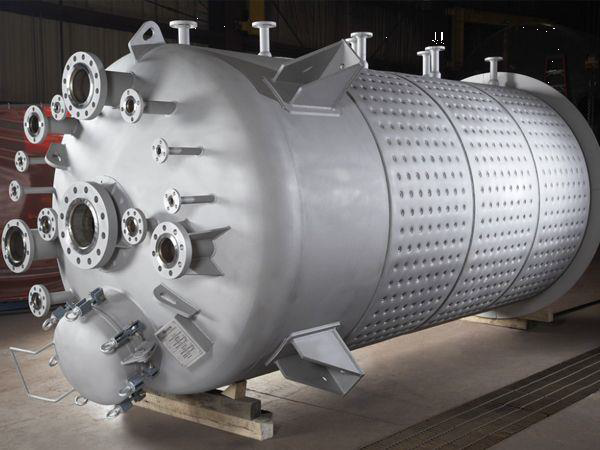Pressure Vessel Inspection & Maintenance: Now And Into The Future

With pressure vessels (PV) having a multitude of uses within the petroleum and petrochemical industries and, crucially, being a highly-valuable yet hazardous asset, it makes sense that much time and money is being dedicated to the creation of improved means of inspection and maintenance.
Not only does this apply to the construction of the PV itself, but also the internal components. Operators have to ensure the continued safe use of such vessels and avail themselves of detailed condition information regarding the structure and associated internal elements. To do so effectively it’s necessary to factor in regular periods for inspection, cleaning and maintenance. Such downtime needs to be planned and kept to a minimum but must still allow for adequate analysis of the vessel. In addition, it’s vital for companies to minimise the risk of costly, unplanned maintenance.
The human element: Current best practice
Internal visualisation of a PV and its components is a combination of human intervention and various technological apparatus.
- General Visual Inspection (GVI): An inspector enters the PV via a manway and determines any suspect locations within the vessel, This includes the walls, cladding, liner and welds.
- Close Visual Inspection (CVI): Following the above, any areas of concern are subjected to a closer inspection
- Welds: All areas of welding are subjected to more scrutiny during the CVI
- Nozzles and welds: The CVI will also include inspection of nozzles and welds
- Inspection of known indications: Areas or components flagged in the past are inspected for progression
- Use of other techniques: These are utilised as and when necessary, and include Ultrasound Testing, Magnetic Particle Inspection, Dye Penetrant and Eddy Current
- Inspection of all internal components: This is carried out by a specialised Operation and Maintenance Inspector
- Visualised inspection of any insulation: If this is in place it’s inspected externally. Any areas flagged will be subjected to a closer follow-up inspection.
Such methods are laborious, time consuming and expensive. And while this isn’t set to change dramatically within the very near future, advancing technology is already beta-testing various methods of removing the human element from the inspection process.
The future of PV inspection and maintenance
Currently there are two main areas being explored by developers that will dramatically reduce downtime during inspection and maintenance, as well as providing the much-needed aspect of increasing safety levels.
- Non-Intrusive Inspection: As the name suggests, this allows for the use of techniques that don’t require a human to enter the vessel. As previously mentioned, there are already various methods for exterior analysis of wall thickness, including Pulsed Eddy Current, Acoustic Resonance and Ultrasound. Excitingly, some of these Ultrasound Testing techniques are, in theory, capable of analysing walls and detecting any internal cracks from the outside.
- Manhole Opening Without Human Entry: While this will still necessitate a PV being taken out of service, it reduces downtime and eliminates the need for vessel isolation. Instead of a human inspector entering to carry out the inspection, this would be completed by robotic means, such as a crawler, arm or snake robot, or an internal drone/flying robot. All would record and transmit data collated from an on-board camera or perhaps Ultrasound Testing.
Looking somewhat further ahead, the use of nanobots is very likely to one day become the norm. It’s envisaged that these tiny robots will be able to operate within the product held in the PV without interfering with any equipment. Such bots could either be introduced during times of testing only, or perhaps permanently reside within the vessel. Delving into the realms of true sci-fi, such nanobots could even be capable of independent movement and navigation.
Of course, should this be possible there’ll be a need for an internal PV charging facility for the batteries, plus a way for the nanobots to pass their data to operators outside. If such technology could operate constantly in large numbers it would mean a reality of 24/7, random scanning that would provide complete and constant coverage. An incredible and effective scenario should it ever come to fruition.
With technology fast-advancing on a daily basis, the future of safer, cheaper and more-advanced pressure vessel inspection and maintenance is drawing ever-closer. Trusted equipment provider Nexxis is at the forefront of these rapidly evolving developments. Thanks to a unique, customer focused solution process, their experts work with companies within various industries – including (but not limited to) Oil and Gas, Petrochemicals, Energy, Aviation, Asset Management, and Defence – to understand their needs and provide not only the latest equipment on the market but are wholly focussed on reducing project downtime.
Browse through our website for more information or contact us for a no-obligation chat.
